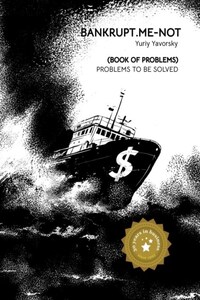This is more like a study guide rather than a book as such. Do you remember what a math book used to be called? A book of problems. It was easier for younger pupils and more challenging for senior ones. Either way, it contained problems to be solved. The right answers were given at the end of the book, but we had to go all the way to the solution by ourselves.
At the end of 2014, the Russian economy suffered another blow when oil prices more than halved. Naturally, the Russian ruble immediately collapsed against the dollar and the euro.
As the old Russian adage goes, “misfortune never comes alone.” It was exactly at this point that the Russian government felt compelled to take a heavy-handed approach to the economy, declaring a policy of import phaseout. The implication was that if a business can survive one misfortune, it will survive another. Those who can keep their heads above water will build the new Russian economy.
The course was set for the development of multi-level processing and high technology. The government slapped a ban on foreign materials that could no longer be used to manufacture end products for government agencies (including partially government-owned monopolies, which at the time accounted for over 90% of the country’s economy). This was impossible for many businesses, as they simply could not replace the materials and equipment overnight, nor could they invent or buy the new technology. By mid-2015, the economy had plunged to the brink of bankruptcy. Only one question remained: who would go bankrupt next?
It was far more than a disaster for millions of different businesses. It became the beginning of the end for an economy that had lived off imported materials and reselling of imported technology. That was when the most venturesome entrepreneurs ‘crash-dived’ into preparations for bankruptcy. It truly felt like a submarine dive: perfect concentration, steady nerves, unflappable composure, the whole crew ready to steer only one course – for survival.
This was not the first time, nor will it be the last. Crises are as numerous as storm waves, and we must learn to deal with them. Theory will no longer help. What matters is practice. It is for this reason that the book is based on real events. They may not be described with pinpoint accuracy, but the conclusions are sincere. You know, as the credits of a film sometimes say: “Any resemblance to actual people or real events is purely coincidental.” It is the same here. There may not have been identical situations, but the description is still 50—60% fair and square.
I believe that many businessmen and lawyers in Russia and abroad will corroborate my research. You can read a lot of books on bankruptcy and memorize almost all the legislative and judicial practice related to this tricky step, but you can never know where it may lead. Having studied a large number of related Russian and international cases, I dare to say that bankruptcy is neither death nor even an incurable disease. It is merely a vehicle for getting rid of liabilities that have suddenly become a deathly stranglehold on a business of any size.
That is why I would like to share my research results with you.









